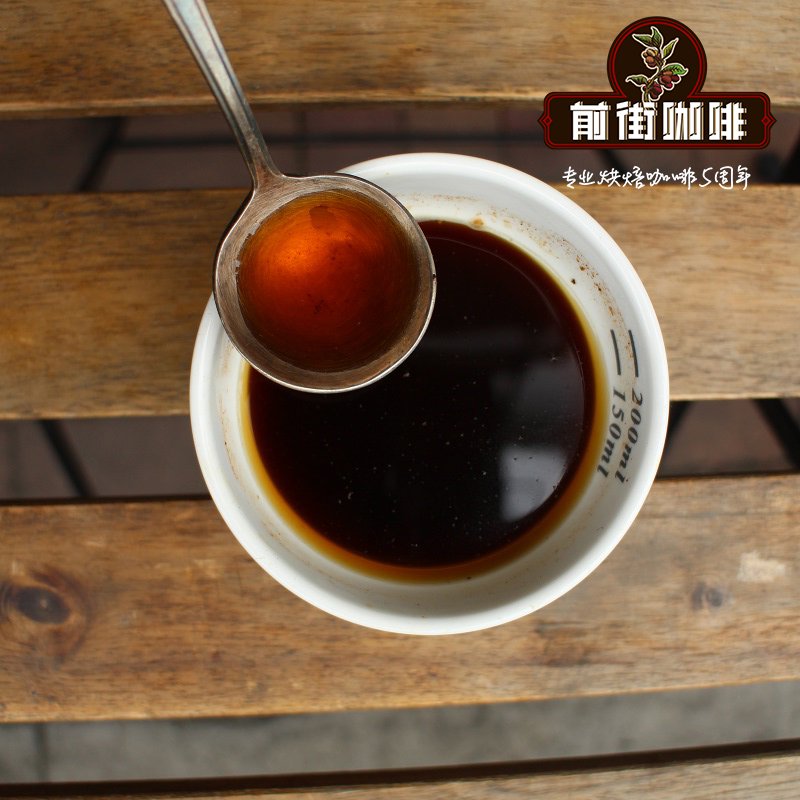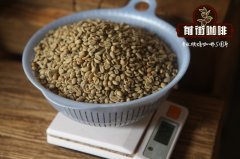How to make coffee drink bitterness? The latest study finds that the source of astringency is not tannin.

How to make coffee drink bitterness? The latest study finds that the source of astringency is not tannin.
New research shows that the astringency in coffee is mainly caused by quinic acid and gluconic acid, not tannin.
The chlorogenic acid in coffee is degraded into dicaffeoquinic acid by baking, which condenses the lubricating protein of saliva and produces a wrinkled astringency in the epithelial tissue. Although dicaffeoylquinic acid is bitter in the mouth, it is a powerful antioxidant and a good medicine for the treatment of AIDS and hepatitis.
In terms of species, Arabica coffee is less bitter than spirobusta beans, and defective beans can also bring bitterness and other defective flavors.
In terms of raw coffee beans,
In the case of raw beans, the factors that produce bitterness:
Raw bean varieties contain too much chlorogenic acid, Robusta and related hybrids, Coffee defect rate is high: moth-eaten beans, immature beans, coffee fruits are harvested before maturity.
The dryness of coffee is similar to eating raw fruits and vegetables, such as bananas, and the taste of the tongue is the same as that of the mouth. If the coffee is of high quality, it won't make you feel bad.
In terms of coffee brewing,
In the extraction, the number of stirring should not be too much. Moderate stirring can improve the extraction rate of coffee, if excessive stirring, it will cause excessive extraction of coffee, astringency will be produced. When cooking, the extraction time should not be too long. Unless after a series of studies, using special brewing methods, the total extraction time of coffee is best controlled within the recommended brewing time. If you want to avoid the strange smell when brewing coffee, you need to grasp the honey spot extraction of the coffee. The sweetness of coffee can balance the taste of coffee, enhance the taste buds' perception of the thickness of caffeine, and cover the defects of astringency.
In terms of baking,
Quick-fried roasted coffee beans in shallow beans are prone to astringent and metallic taste, because quick-frying will develop more dicaffeoyl quinine, which is also the main source of bitterness.
In the baking process, the smoke exhaust is not smooth or the air valve is too small, the taste of roasted coffee beans is easy to mix, not only astringent, but also accompanied by a strong sense of smoke.
After the beans are heated to a certain extent, the beans will begin to swell and explode to a certain extent, the first explosion will begin to enter different degrees of culture, different temperatures will produce different flavors, and the second explosion will enter deep carbon culture.
Very shallow roasted beans can also cause obvious astringency, some use shallow roasting to show the acid of coffee, and even rescue the beans before the end of an explosion, especially for high-hardness coffee beans such as Kenya, if you save the beans before another explosion, you can almost avoid a bad taste.
In the baking process, if the force is too strong, it is easy to produce astringent taste and raw bean flavor due to uneven "diplomatic endogenesis".
The dehydration period is too short, that is to say, the water is insufficient, the bean core is not ripe, and chlorogenic acid stays too long in the process of water decomposition, which will also produce excessive caffeic acid and quinic acid, thus dealing with the bitterness of the coffee.
Important Notice :
前街咖啡 FrontStreet Coffee has moved to new addredd:
FrontStreet Coffee Address: 315,Donghua East Road,GuangZhou
Tel:020 38364473
- Prev

Rose Coffee | Jensen Manor in Panama introduces the characteristics of Jensen Manor's rose summer flavor.
Rose Coffee-Panama Jensen Manor in Panama-Geisha Coffee brief introduction to Rose Summer Coffee Geisha is also known as "champagne of the coffee industry". Jensen Rose Summer clean taste is not bitter not astringent, refreshing slightly sour fruit aroma, rich and varied aroma, unwittingly drank up, is really an imported instant drink. Owner Carl Jensen's Jensen Manor, was shortlisted for the Panamanian Fine Coffee Association (SCA).
- Next

Introduction of F1 Coffee at three Wonders Manor in Costa Rica is the flavor of F1 coffee better than bourbon
Costa Rica three Wonders Manor F1 sun production area: Tara bead planting altitude: 1450-1750 m varieties: F1 soil species: volcanic soil classification standard: SHB treatment: sun treatment harvest method: artificial harvest dry aroma: hazelnut, orange, raisin, banana wet fragrance: caramel milk, honey apple, brown sugar, longan honey sipping: dark berry fruit notes, sweet peach, purple
Related
- Detailed explanation of Jadeite planting Land in Panamanian Jadeite Manor introduction to the grading system of Jadeite competitive bidding, Red bid, Green bid and Rose Summer
- Story of Coffee planting in Brenka region of Costa Rica Stonehenge Manor anaerobic heavy honey treatment of flavor mouth
- What's on the barrel of Blue Mountain Coffee beans?
- Can American coffee also pull flowers? How to use hot American style to pull out a good-looking pattern?
- Can you make a cold extract with coffee beans? What is the right proportion for cold-extracted coffee formula?
- Indonesian PWN Gold Mandrine Coffee Origin Features Flavor How to Chong? Mandolin coffee is American.
- A brief introduction to the flavor characteristics of Brazilian yellow bourbon coffee beans
- What is the effect of different water quality on the flavor of cold-extracted coffee? What kind of water is best for brewing coffee?
- Why do you think of Rose Summer whenever you mention Panamanian coffee?
- Introduction to the characteristics of authentic blue mountain coffee bean producing areas? What is the CIB Coffee Authority in Jamaica?

